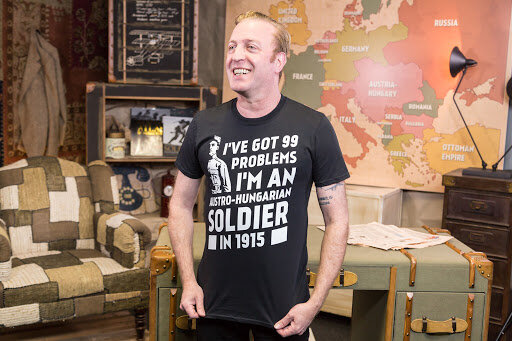The teaching of history is a discipline with many weak points. In countries such as Mexico, there are problems with teachers’ development to impart the subject as well as the resources and teaching materials available to conduct the courses. In the United States, there are regions where they are still fighting for academic programs that fully reflect the American historical reality.
For teachers who find it challenging to collect accurate and entertaining material for their students in history courses, we share three educational programs to strengthen their selection of content. All the programs included in the list can be accessed free of charge via YouTube.
1. In-depth history: IT’S HISTORY!
Produced by Mediakraft Networks, this YouTube channel emerged in 2014 and specializes in narrating specific episodes about world history in detail. The show, produced in Munich by a team of history experts, is narrated and written by the historian, Indiana Neidell.
Neidell combines his talents as a voice actor, musician, and Internet personality to recount historical episodes such as the Cold War, the Industrial Revolution, and the Chinese Cultural Revolution in a clear, concise, and friendly way, suitable for experts who want to learn more about world history as well as for beginners who are just starting in the subject.
The production company also has available sister channels that specifically address the First and Second World Wars. The majority of the chapters of these series come with 36 subtitle language options, including English, Spanish, French, German, Arabic, Chinese, and Korean, among others.
2. They’re not cartoons; they’re extra credits: Extra Credits
The idea of the Extra Credits channel emerged in 2008 when co-creator Daniel Floyd produced two video presentations for his Art History and Media Theory classes at Savanna College of Art and Design. In July 2010, they began broadcasting the show Extra Credits on YouTube, covering topics about video game production and popular culture. In 2013, they included world history with chapters under the title, “Extra History.”
Ten years later, Extra History now has one of the largest and most diverse historical content libraries on YouTube and Twitch, covering everything from pieces about characters such as Simon Bolivar, Mary Seacoal, and Yi Sun Sin, to complex historical events whose understanding requires touching on topics about the economy and sociology, such as the episode about the South Sea Company in the 18th century.
Most chapters have 7 to 15 language options for subtitles, almost always offering Latin American, peninsular, or generic Spanish subtitles.
3. From Mexico with love: Bully Magnets
Produced by Andrés Alba, Antonio Romero, Enrique López, and Luis Felipe Angeles, Bully Magnets opened its YouTube channel in 2010 to disclose historical content in a short, friendly, and characteristically entertaining format, especially targeting young audiences. Its content is varied and ranges from topics of academic interest, such as the conquest of Mexico and the discovery of America, to the life of a Pope who hated cats, or a workday in the life of an executioner in the time of the French Revolution. The channel has one of the largest historical libraries of the Spanish-speaking world, and several of its videos feature English and Spanish subtitles.
Standardized sources and materials will always be the first resources for teaching history in schools. Still, as complementary content to these primary sources, shows like these are a great help in maintaining the engagement of students in the classroom.
Teachers: Do you use auxiliary digital content in the classroom to reinforce the learning of history? Tell us in the comments.
This article from Observatory of the Institute for the Future of Education may be shared under the terms of the license CC BY-NC-SA 4.0 
)
)


)